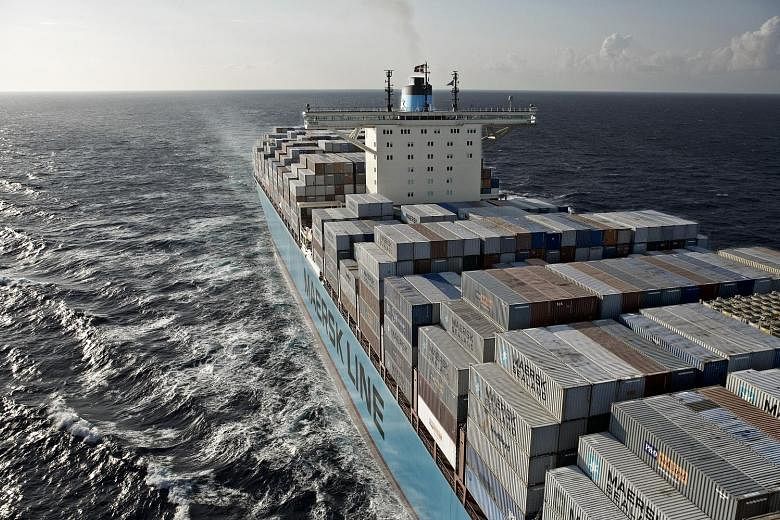Staying competitive in the cutthroat container shipping industry means going for the "best value proposition" when it comes to moving its ships, said a top executive at Maersk Line.
Mr Robbert van Trooijen told The Straits Times: "Trans-shipment cargo goes to where the most cost-effective solution is in place.
"So for all the hubs - whether it is Busan, Hong Kong, Singapore or Tanjung Pelepas in Malaysia - the efficiency that the port delivers in terms of trans-shipment cost is what drives the volume that goes through it. And that's always a continuously developing situation."
Mr van Trooijen, the firm's Asia-Pacific chief executive, said Maersk, the world's top container shipping company, has moved container volumes between hubs, "simply because the value proposition is different somewhere else".
"We are in an extremely cost-competitive industry, so if we want to gain business from our customers, we need to have the best value proposition from those shipping hubs," he added, citing factors like efficient operations, high productivity, berth-on-arrival services and low costs.
About 55 per cent of Maersk's services in Asia called at Singapore in the first quarter this year - up from the 40 per cent in the same period a year earlier. This reflects the importance of Singapore to the firm which also has dedicated berths at the Port of Tanjung Pelepas.
The rise came as the line took advantage of an increase in available capacity here, said Mr van Trooijen, as expansion continues at the Port of Singapore. He noted that Singapore is Maersk's second- or third-largest hub in Asia, behind its favoured port at Tanjung Pelepas.
He acknowledged that Singapore is not known for having low costs, but noted that at the end of the day, it is "about the product you buy and the price you pay for it".
"If we're trans-shipping a lot here, that means we've found a value proposition in Singapore that is worth keeping," he said, stressing however that this scenario is not static. "It's a situation where everybody constantly wants to stay on their toes, including ourselves, to be most competitive for the customer," he said.
Maersk Group, as a whole, has not been spared the turbulence that rocked the industry in recent years, with its container shipping unit reporting an underlying loss of US$80 million (S$111 million) in the latest quarter. It said in late 2015 that 4,000 jobs would be cut from its container shipping unit, at a time when carriers were - and continue to be - hit by a severe capacity glut.
As part of a slew of reorganisation efforts, the group merged its Singapore and Hong Kong regional offices last year, making Hong Kong its Asia-Pacific headquarters, while its Singapore outlet was tasked with overseeing the South-east Asia business.
A spokesman said Maersk Group, which employs about 700 people in Singapore, has not cut headcount here despite the restructuring, and that employee numbers have been stable in recent years, even increasingly slightly.
The company has investments of more than US$12 billion in Singapore. It also ranks among the largest shipowners here, with around 145 vessels under the Singapore flag, including drilling platforms, container ships and tankers.
Mr van Trooijen noted that 2016 was a momentous year for the shipping industry - marked by the demise of South Korea's biggest shipping line Hanjin Shipping, as well as an unprecedented wave of mergers and acquisitions.
Maersk itself is paying €3.7 billion (S$5.7 billion) to buy its smaller German rival Hamburg Sud in a deal to be completed late this year.
He added that he would not be surprised if consolidation continues to takes place in the industry this year. "I think customers were increasingly concerned that the industry was so unprofitable," said Mr van Trooijen. "When the industry becomes more stable because the participants are healthier, the products are more stable - that (will) certainly be more welcomed by customers."



